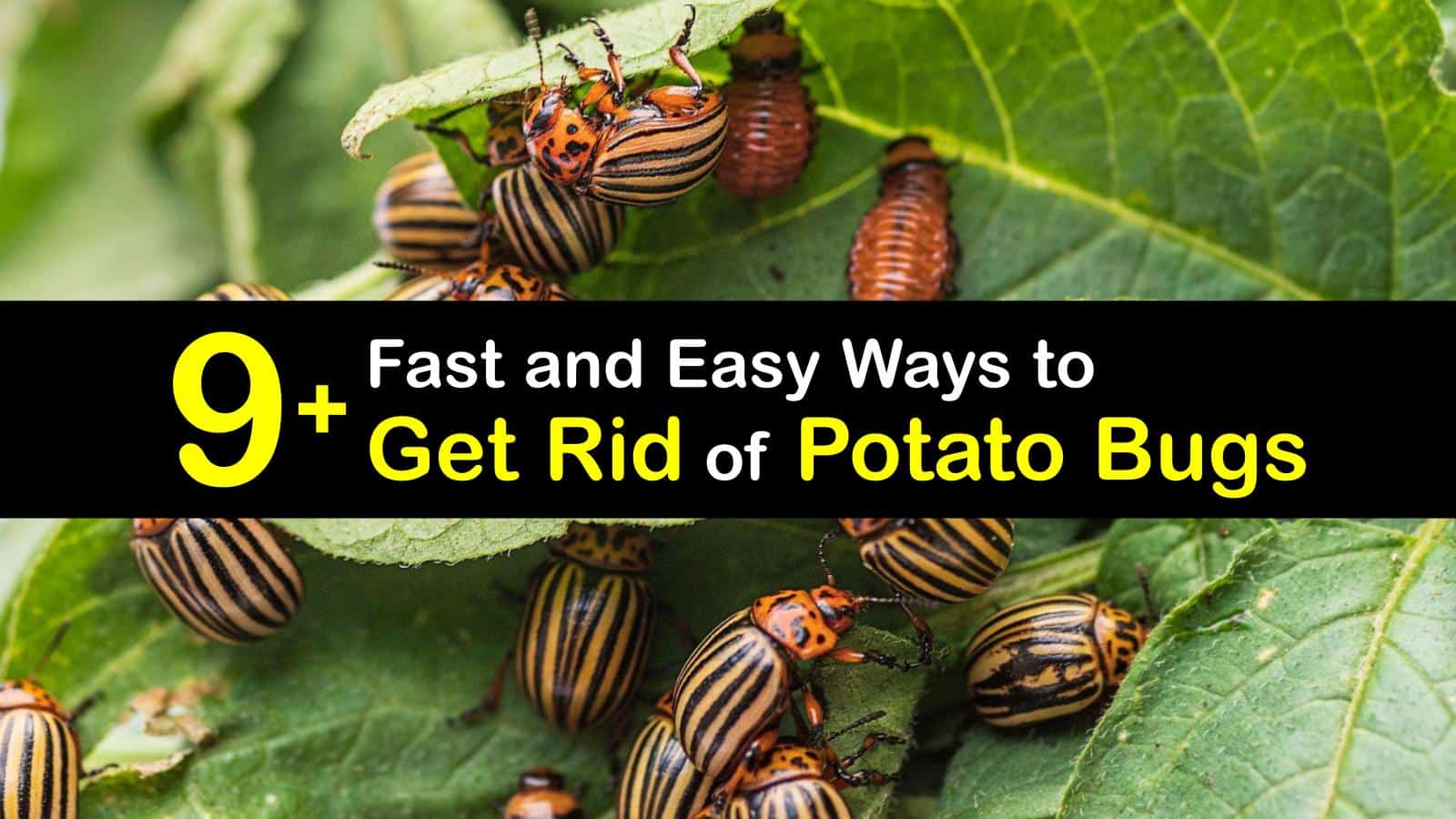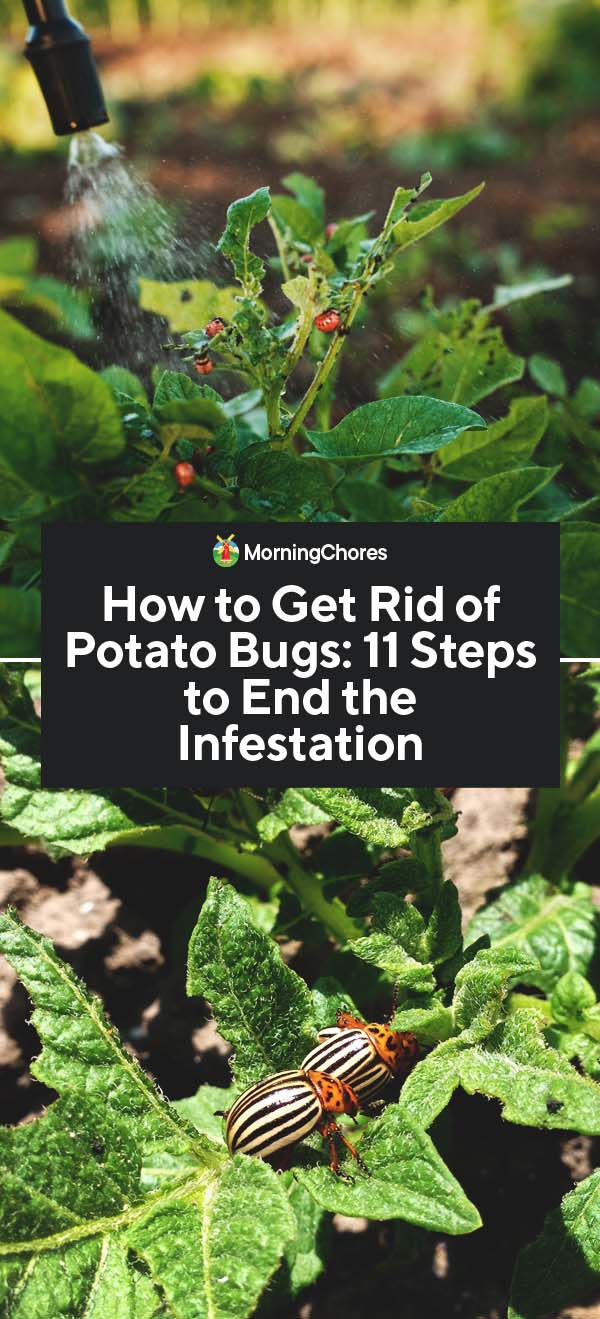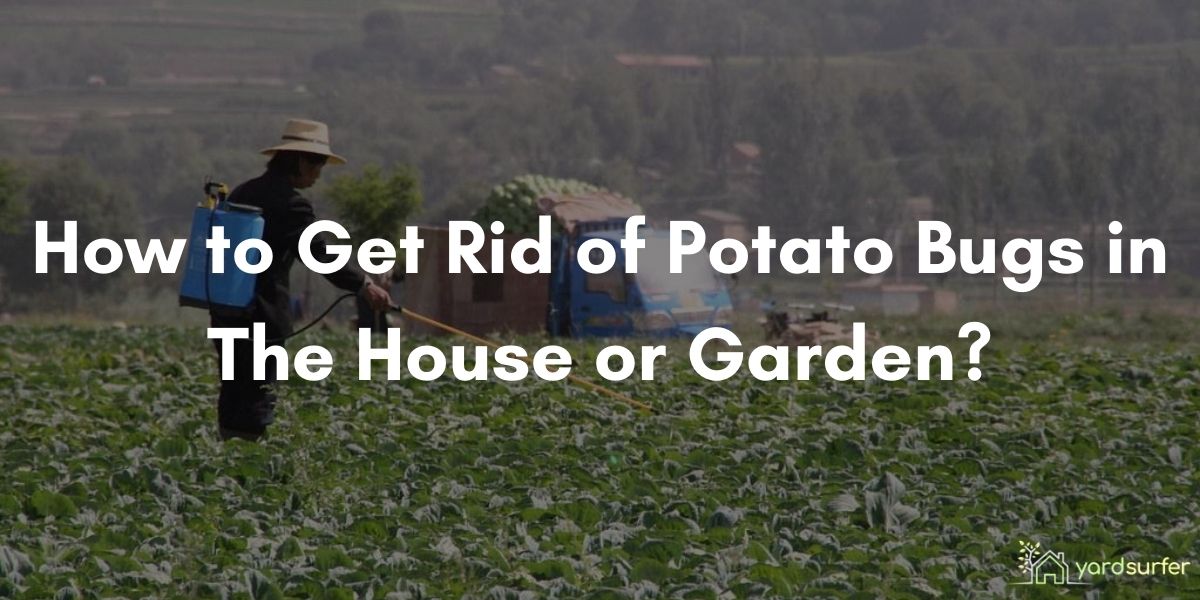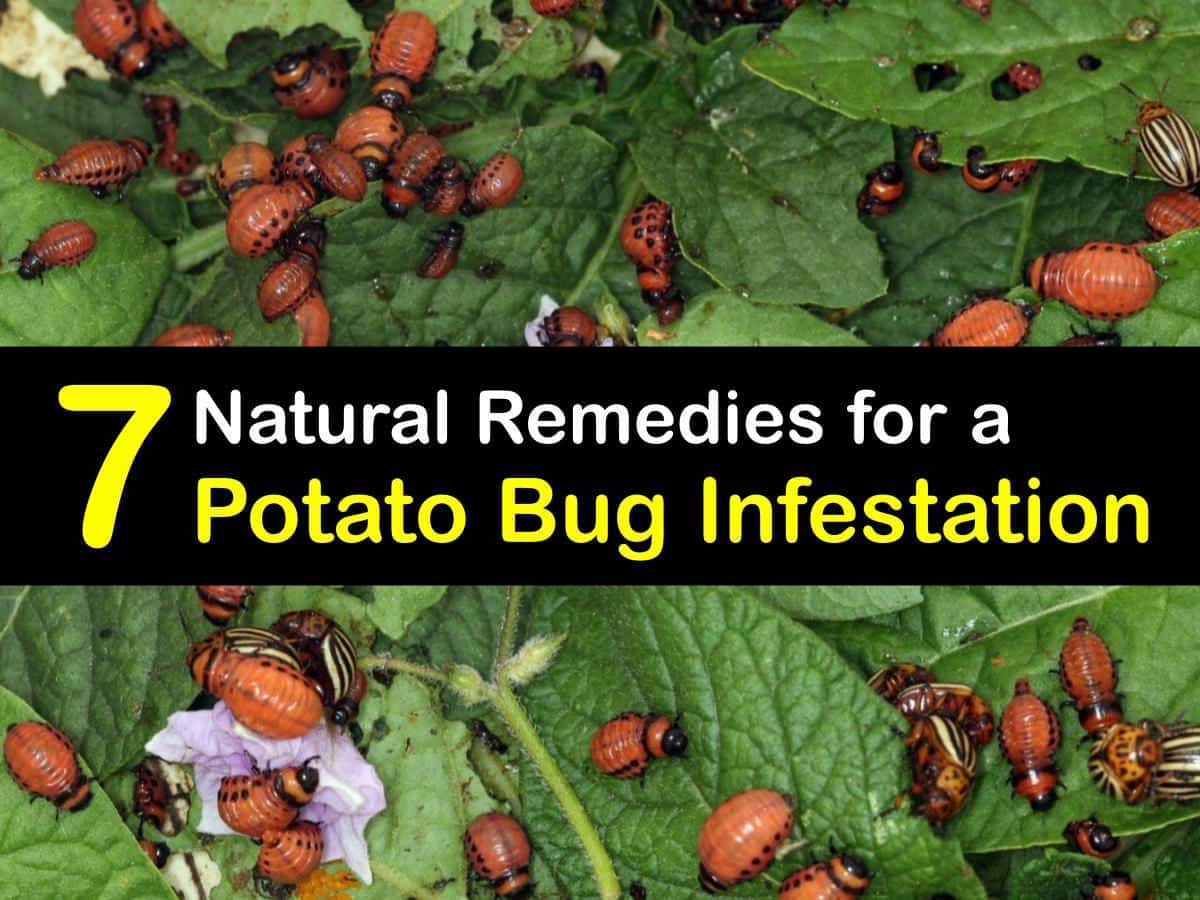
Organic Potato Bug Control How to Get Rid of Potato Beetles Naturally
22 9 minutes read How To Get Rid Potato Bugs You are interested in How to Get Rid of Potato Bugs: A Complete Guide to Protect Your Plants right? So let's go together potatobenefits.com look forward to seeing this article right here! Potato bugs, also known as Colorado potato beetles, can be a nightmare for any gardener or farmer.

Killing Potato Bugs Getting Rid of Bugs in Potatoes
Last Updated: October 22, 2023 by Mallory Klein Reviewed by Olivia Lindsay Nobody wants creepy bugs and larva crawling all over their homegrown fruits and veggies and causing problems. Garden pests are a danger to our hard work, and our potato plants are in for the most trouble if the Colorado potato beetle infests them.

How To Get Rid Of Colorado Potato Beetles Homestead Acres
Mulching. Covering your crops with mulch may help in eliminating a potato bug by repelling it. "Mulch is any material that is spread or laid over the surface of the soil as a covering. It is used to retain moisture in the soil, suppress weeds, keep the soil cool, and make the garden bed look more attractive.

Organic Potato Bug Control How to Get Rid of Potato Beetles Naturally
Beginner 30 mins. - 1 hour Print This Page How to Get Rid of Potato Bugs In Your Garden This page is an expert guide on getting rid of Potato Bugs from your garden using the products and methods suggested by our experienced pest control specialists. Follow this guide and use the recommended products and you will eliminate Potato Bugs, guaranteed.

6 Ways to Get Rid of Potato Beetles in Your Garden Naturally! Potato
How to Get Rid of Potato Bugs: 11 Steps to End the Infestation Bethany is a suburban homesteader who grows over 30 types of vegetables in her garden every year to provide the vegetables needed to feed her family of six for the entire year. She practices organic gardening without the use of any pesticide and chemical.

How to Get Rid of Potato Bugs 11 Steps to End the Infestation
1. Removal of Potato bugs manually One of the most effective ways to get rid of potato beetles from your garden is by hand-picking them. Although this method is tedious, it is very effective and quite simple. By picking and dropping the bugs directly in soap water, you can make sure that all the bugs are dead. Required Items Insecticidal soap Water

How to Get Rid of Potato Beetles Naturally Simply Sustainable Family
To make your own potato bug killer home remedy, you can make an insecticidal spray this way: Fill a 500 ml (17 oz.) spray bottle ¾ full with water. Add 2 tablespoons of neem and one tablespoon of Castile soap. Shake well to thoroughly mix the ingredients. Spray on your plant leaves as needed.

How to Get Rid of Potato Bugs in The House or Garden? Yard Surfer
In this article About Potato Bugs Colorado potato beetles or crickets, commonly known as potato bugs, are nocturnal insects that can be found in America and Mexico. This insect has about 40 species throughout North and South America. They are large in size, up to two inches. These cricket-like insects have orange and black stripes.

Potato Bug In Hand
They are known as potato bugs, and if you have questions hovering in your mind, like What do Potato Bugs Eat and How to Get Rid of Potato Bugs, then you are at the right place! Table of contents Learn How to Get Rid of Flies Naturally here What are Potato Bugs? Potato bugs are classified into two different categories: The Jerusalem Cricket

Complete Guide To The Potato Bug How to Get Rid of Potato Bugs YouTube
Step 1 Vacuum up any potato bugs with the hose on your vacuum. This method works well if you only have a few potato bugs in your home. Video of the Day Step 2 Remove excess moisture in your home by using fans and dehumidifiers. Open doors and windows to allow good ventilation. Step 3 Inspect your gutters on the outside of your home.

How To Get Rid Of Potato Bugs Naturally
Neem oil is a natural insecticide that can kill potato bugs and other pests. Here's how you use neem oil to keep potato bugs at bay: In a sprayer, combine 2 tablespoons of neem oil with 1 gallon of water. Spray the mixture onto your potato plants' leaves and stems, being careful to cover both the tops and bottoms of the leaves.

How Do You Get Rid Of Potato Bugs In California? Foodsalternative
The Colorado potato beetle ( Leptinotarsa decemlineata) - not to be confused with the Jerusalem cricket - is a serious pest in potato fields and among solanaceous crops across the world. Also known as potato bugs, these insects reside in the genus Leptinotarsa which includes other leaf beetles that often gravitate toward tomato plants.

How to Get Rid of Potato Bugs Naturally Traditional Homemaker
Mix neem oil with peppermint and rosemary oils in water to create a potent spray. Use vinegar and dish soap as a simple insecticidal solution, applying it every few days. Concoct a spicy garlic and cayenne pepper mixture to keep bugs at bay weekly. Dust plants with diatomaceous earth, especially during dry weather for physical pest control.

How to Get Rid of Potato Beetles Without Pesticides The Kitchen Garten
Here are some tips to get rid of them. Potato bugs can be a serious threat to your garden; especially for plants, like potatoes and tomatoes. Even though, they are commonly known as potato bugs; in fact, they are Colorado potato beetles ( Leptinotarsa decemlineata ).

How To Get Rid Of The Potato Bug How I Get Rid Of
To create a homemade plant spray, mix 1 gallon of water with 1 tablespoon of dish soap and 4 teaspoons of neem oil. Once everything is combined thoroughly, spray the solution on the plants lightly. In case you have a serious potato bug infestation, do not worry.

Killing Potato Bugs Getting Rid of Bugs in Potatoes
Dish Soap and Vinegar Spray: You could also use a natural mix of dish soap and vinegar for infested garden plants. Mix one cup of distilled white vinegar and one teaspoon of liquid dish soap. Dilute the mixture using three cups of water. Spray thoroughly on the affected plants every 2 to 3 days.